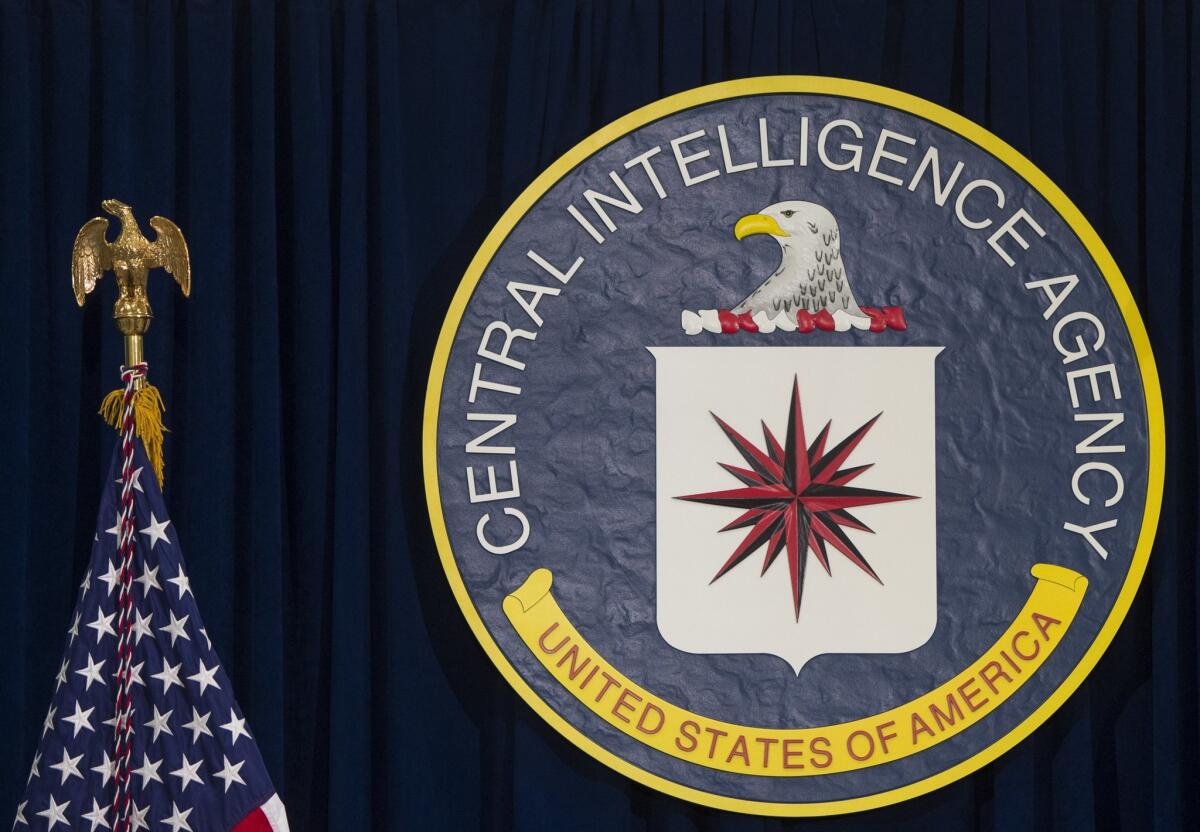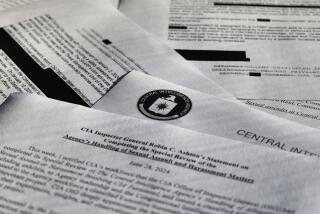Newly released CIA documents detail torture tactics after Sept. 11; Bush voiced unease about treatment of detainees

- Share via
Reporting from WASHINGTON — Nearly 900 pages of previously classified CIA emails, interrogation reports and internal investigations revealed disturbing new details about the CIA’s use of torture after the Sept. 11 attacks.
They include an internal CIA memo dated June 7, 2006, that says President George W. Bush expressed unease to Porter J. Goss, then the CIA director, about mistreatment of detainees.
“The president was concerned about the image of a detainee, chained to the ceiling, clothed in a diaper and forced to go to the bathroom on themselves,” the CIA memo states about Bush’s meeting that day with Goss.
That was about four years after the CIA had begun using harsh interrogation techniques at secret prisons around the globe known as “black sites.”
A 36-page investigation of the 2002 death of Gul Rahman, a captive who froze to death in a CIA interrogation facility in Afghanistan known as the “Salt Pit,” offered further details.
“Often, prisoners who possess significant or imminent threat information are stripped to their diapers during interrogation and placed back into their cells wearing only diapers,” it reads. “This is done solely to humiliate the prisoner for interrogation purposes.”
“When the prisoner soils a diaper, they are changed by the guards. Sometimes the guards run out of diapers and the prisoners are placed back in their cells in a handcrafted diaper secured by duct tape. If the guards don’t have any available diapers, the prisoners are rendered to their cell nude.”
The documents show that some CIA prisoners were snatched in error, and others had less intelligence value than CIA operatives had initially told their superiors.
More than 50 documents were released Tuesday in response to a lawsuit filed under the Freedom of Information Act by the American Civil Liberties Union.
The documents “underscore the cruelty of the methods the agency used in its secret, overseas black sites,” said Jameel Jaffer, ACLU deputy legal director. “It bears emphasis that these records document grave crimes for which no senior official has been held accountable.”
The documents revealed intense debate inside the agency and the Bush administration about the effectiveness of the CIA’s brutal interrogation techniques and its use of secret prisons from 2002 to 2008.
See the most-read stories this hour >>
In late 2004, White House aides asked the CIA whether its so-called enhanced interrogation techniques had yielded valuable intelligence about terrorist plots.
Condoleezza Rice, Bush’s national security advisor, asked the CIA to commission an independent study to gauge the effectiveness of the program.
The CIA refused. “There is no way to conduct such a study,” Goss wrote.
Some of the documents were cited, but not released, in the Senate Intelligence Committee’s explosive 2014 report on the torture program. That report concluded that torture did not work and that CIA officials had misled Congress, the White House, the Justice Department and the public.
Some of the newly released documents offer early glimpses of how the CIA intended to treat Al Qaeda suspects in its custody.
Abu Zubaydah, a Saudi member of Al Qaeda who was waterboarded at least 83 times in CIA custody, was a particular focus. Senior CIA officials uniformly believed he should be hidden away in isolation for the rest of his life, according to a heavily redacted memo from 2002.
“All major players are in concurrence that AZ should remain incommunicado for the remainder of his life,” it reads.
Zubaydah was later deemed to be of relatively low importance in Al Qaeda. He is still held at the U.S. military prison at Guantanamo Bay, Cuba.
President Obama banned the CIA interrogation tactics when he took office in 2009, and John Brennan, the current CIA director, has said the agency won’t use torture again.
Donald Trump, the presumptive Republican presidential nominee, has said he would bring back waterboarding and other harsh interrogation tactics if he was elected.
MORE NATIONAL NEWS
What is the lone surviving firefighter from Yarnell, Ariz., doing to get his reputation back?
A hangar at JFK became the tomb of 9/11. Now nearly empty, its job is done
More to Read
Sign up for Essential California
The most important California stories and recommendations in your inbox every morning.
You may occasionally receive promotional content from the Los Angeles Times.












